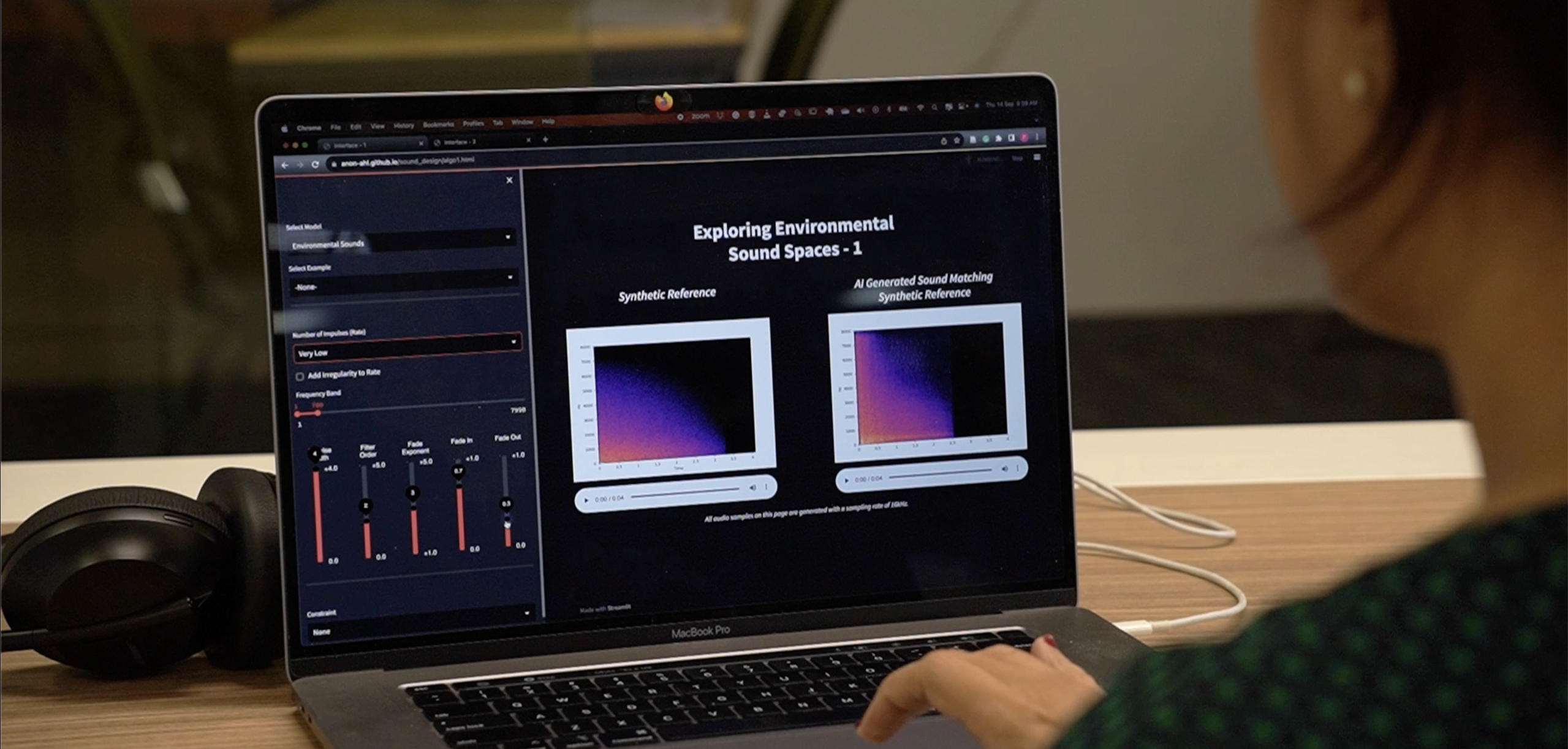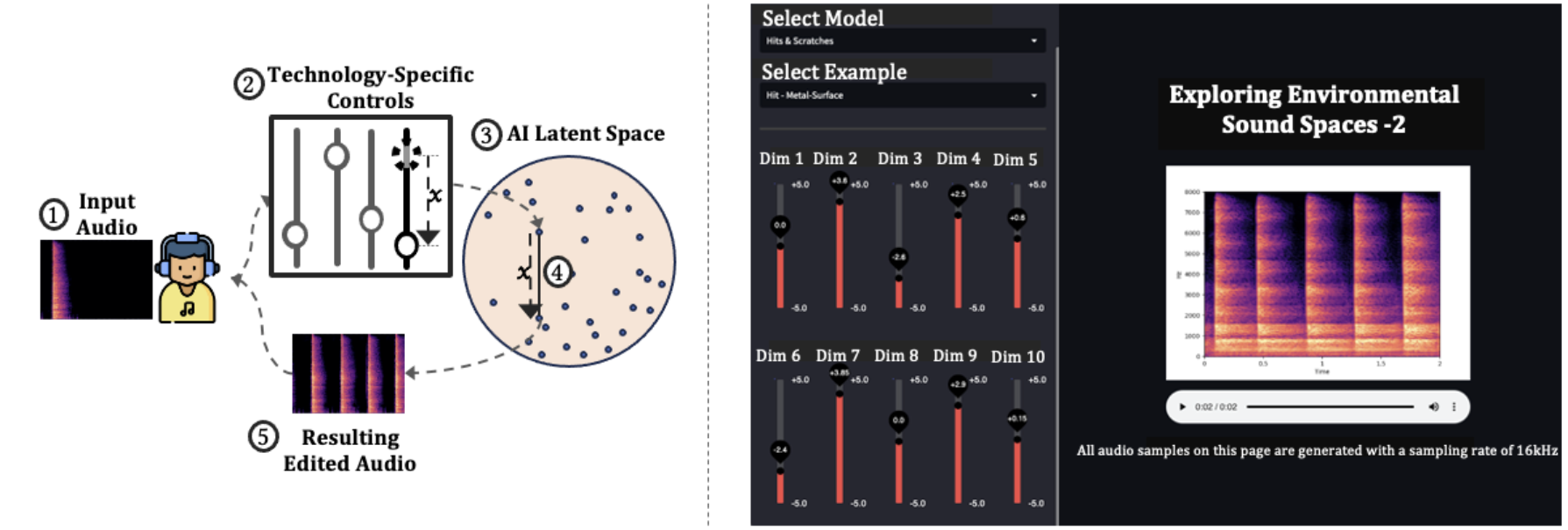Sound Designer-Generative AI Interactions
The practice of sound design involves creating and manipulating environmental sounds for music, films, or games. Recently, an increasing number of studies have adopted generative AI to assist in sound design co-creation. Most of these studies focus on the needs of novices, and less on the pragmatic needs of sound design practitioners. In this paper, we aim to understand how generative AI models might support sound designers in their practice. We designed two interactive generative AI models as Creative Support Tools (CSTs) and invited nine professional sound design practitioners to apply the CSTs in their practice. We conducted semi-structured interviews and reflected on the challenges and opportunities of using generative AI in mixed-initiative interfaces for sound design. We provide insights into sound designers’ expectations of generative AI and highlight opportunities to situate generative AI-based tools within the design process. Finally, we discuss design considerations for human-AI interaction researchers working with audio.
Project Video: Watch Here
Demo and Other resources: pkamath2.github.io/chi2024-resources



PUBLICATIONS
Sound Designer-Generative AI Interactions: Towards Designing Creative Support Tools for Professional Sound Designers
Kamath, P., Morreale, F., Bagaskara, P.L., Wei, Y., and Nanayakkara, S.C. 2024. Sound Designer-Generative AI Interactions: Towards Designing Creative Support Tools for Professional Sound Designers. In Proceedings of the CHI Conference on Human Factors in Computing Systems (CHI ’24), May 11–16, 2024, Honolulu, HI, USA.
Example-Based Framework for Perceptually Guided Audio Texture Generation
Kamath, P., Gupta, C., Wyse, L., and Nanayakkara, S.C., “Example-Based Framework for Perceptually Guided Audio Texture Generation,” in IEEE/ACM Transactions on Audio, Speech, and Language Processing, vol. 32, pp. 2555-2565, 2024.